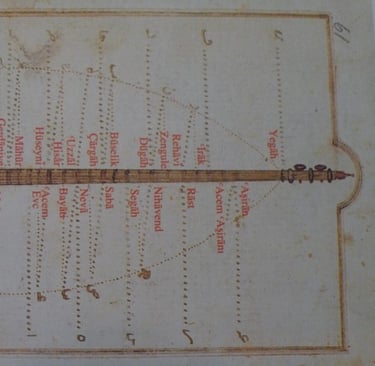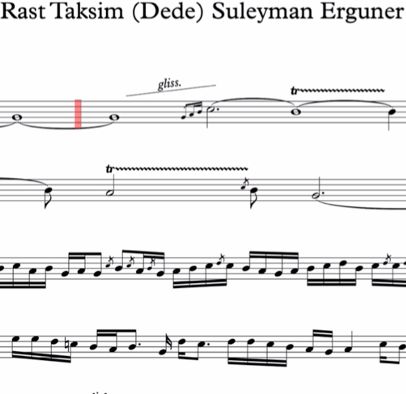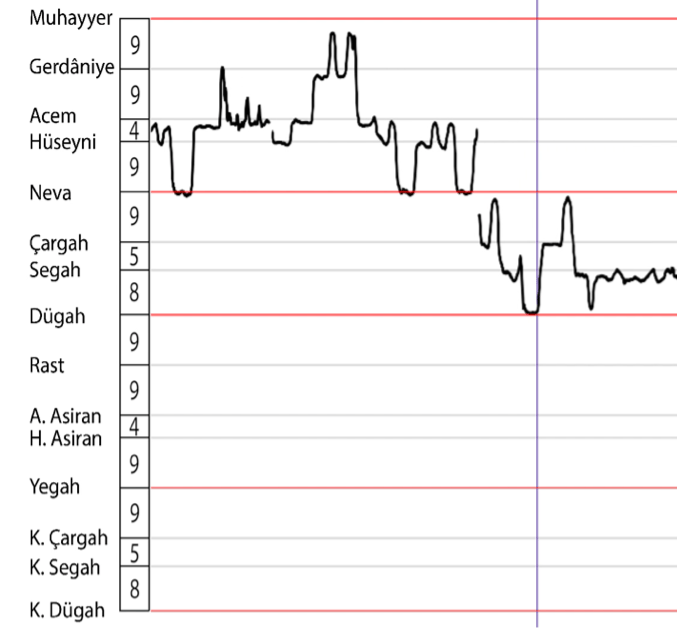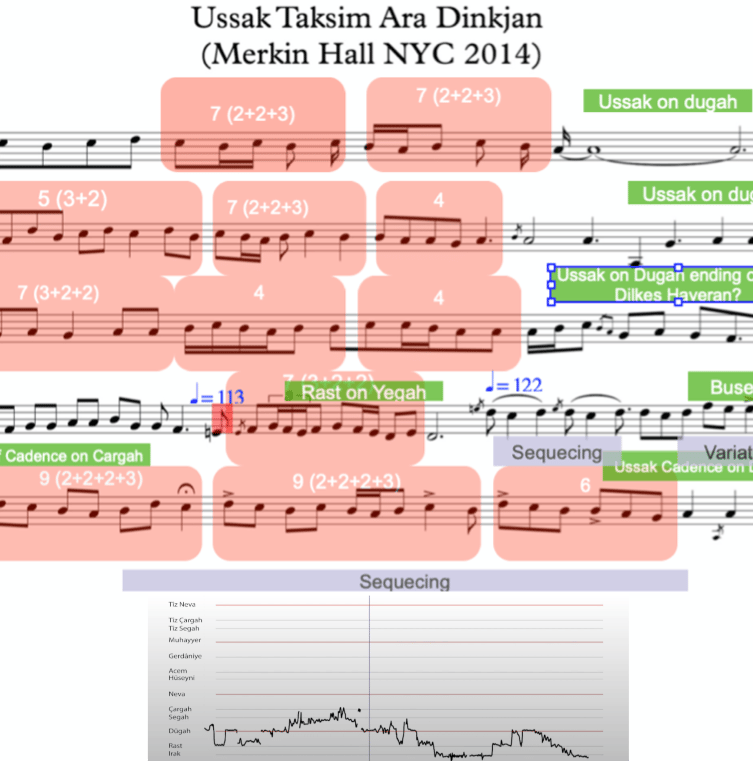What is Makampedia?
The Makampedia philosophy combines teaching with visualised educational material, offering a variety of practical tools to support students and accelerate understanding of Makam music and Taksim improvisation.
Reviving Tradition, Empowering Individual Learning
Makampedia connects the Master-Apprentice (Mesk) tradition with modern self-directed learning. Using Taksim, performance analysis, interactive visualizations and annotations, it turns legendary performances into powerful learning experiences.
Makampedia inspires musicians to honour tradition while crafting their own unique artistic voice.
Get Access to:
clear, easy-to-follow transcriptions of Taksims
visualisations of intricate melismatic nuances
annotations offering insight on various layers of stylistic elements
Understand:
phrasing and melodic development in various Makam modes
complex musical expressions of Makam masters
the role of rhythm in Taksim
Develop
your own Taksim and style by studying the styles of your favourite artists
your performance in the style
rhythmical phrasing
instrument specific techniques
Why choose Makampedia?


Audio Synchronised Transcriptions
Detailed transcriptions of Taksim improvisations and composition performances provide unique insights into phrasing and personal styles of Makam masters.


Melody Visualisation
Connecting sound with visual elements, such as melodic contours help memory, creativity and emotional connection to the music.
This method can be helpful for musicians, composers and listeners to better understand melodic intricacies, internalise and interact with melodies through performances and improvisations.


Multi-Layered Annotations and Explanations
Annotated transcriptions present multiple layers of analysis on rhythmic, melodic and stylistic elements, offering insights into the playing style of Makam masters.
The audio-synchronised annotated scores and melodic visualisations enable students to connect auditory, visual, and textual learning, covering individual learning needs.




